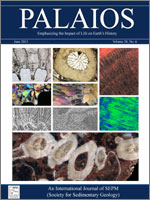We compared sponge spicules occurring in surface sediments with those of a living sponge community in a shallow-water reef environment of Bocas del Toro archipelago, Panama, with the goal of evaluating how faithfully spicular analysis reflects the living sponge community. Most megasclere morphotypes present in living species are also found in sediment. On the contrary, microscleres are underrepresented in the sediment samples. Apart from spicules that belong to taxa that live at present in the area, some morphotypes found in the sediment have no equivalent in the known living community. Forty species of living sponges have been recognized in the study area, but 9 (22%) do not produce mineral spicules and, therefore, are not recorded in sediment. Sediment spicules suggest the presence of 22 taxa, thus, loss of information in the process of fossilization is average to considerable, with most living taxa identified also with sediment spicules. Some morphotypes are abundant in sediment (i.e., ovoid spicules) even though the sponges bearing them are rare or absent, thus suggesting either preferential preservation or recent disappearances of taxa producing them. As transport did not play a significant role during the fossilization process, spicular analysis—when all limitations and constraints are considered—is a tenable tool in the reconstruction of former sponge communities, but not of the share of various sponge species. Spicular analysis may also help reveal the presence of cryptic and excavating species that are often overlooked in traditional studies.
BioOne.org will be down briefly for maintenance on 17 December 2024 between 18:00-22:00 Pacific Time US. We apologize for any inconvenience.
How to translate text using browser tools
1 June 2013
DO SPICULES IN SEDIMENTS REFLECT THE LIVING SPONGE COMMUNITY? A TEST IN A CARIBBEAN SHALLOW-WATER LAGOON
MAGDALENA ŁUKOWIAK,
ANDRZEJ PISERA,
AARON O'DEA
ACCESS THE FULL ARTICLE
It is not available for individual sale.
This article is only available to subscribers.
It is not available for individual sale.
It is not available for individual sale.

PALAIOS
Vol. 28 • No. 6
June 2013
Vol. 28 • No. 6
June 2013




